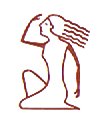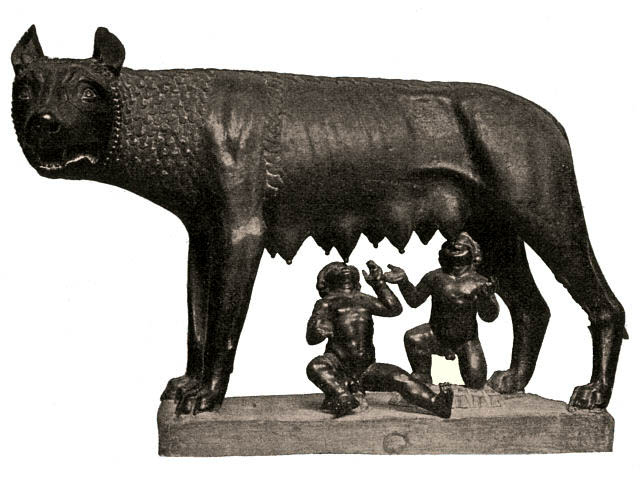|
TRANSLATIONS
GD46
is a type of glyph which comes to mind when thinking about the darkest time of the year. Already a long time ago I became convinced that what is depicted is the roof of a hare paega:
'It is certainly true that the exterior form of the hare paenga, when the superstructure and thatch are intact, resembles an overturned boat, with the form established by the foundation. However, it is equally true (and perhaps equally important) that the configuration of the foundation is otherwise most like the Rapa Nui vulva design called komari. The komari is the quintessential female symbol which is everywhere prominent in Rapa Nui art, often carved in rock and wood, incised on human crania, and painted on the human body. In the hare paenga foundation form, the komari is cut in stone and embedded in the earth, the cosmologically female realm. Spanning above, over and virtually into this komari foundation is the ridgepole 'backbone' and curved rafter 'ribs' of what I surmise to be a symbolically male form. In short, we have a shelter which may be metaphorically understood as 'the sky father enclosing his progeny as he embraces the earth'. Those progeny entered and departed this male/female, earth/sky form through a low, dark tunnel which may be logically compared to the birth canal. This postulated symbolism does not, of course, negate the 'overturned boat' comparison, since Polynesian canoes were often likened to the bodies of great ancestors or to Tane as First Man. The canoe which transported the first exploratory voyage to Rapa Nui was said to have been called The Living Wood, a reference to Tane.' 'Three layers of thatch (hatunga) were secured to the wooden framework in a horizontal manner… The inner layer was of mats (moenga) made of reeds (Scirpus californicus) and sewn together with hau cords. The middle layer was composed of sugar cane leaves (toa or rau toa) which were also probably sewn together to form matwork. The topmost layer was of bundled grass (mauku), laid horizontally and held in place by purlins (kaukau miro) ... the hau cords which secured the purlins to the rafters and the rafters to the ridge pole were always to be knotted towards the right and in three revolutions, 'like [tying off] the umbilical cord of a baby'. A similar practice was once utilised (and occasionally still is) to fasten the lines on a boat. Hotu Matu'a, they said, had promised that if this triplicate practice were followed, fishermen would not lose their lives when their boats capsized at sea and hare paenga would not be torn from their foundations by the wind.' At the top we must have knots - topknots. At the end of a long period there must be a binding together of the previous period with the new one. Three layers of thatch, one for each sun-wife, and also a right-handed knot with three revolutions, like tying off the umbilical cord of the newborn baby. Hau cords for the binding together, and mauku (bundled grass) on the outside, with moega (reed 'sleeping' mats) on the inside, and with (rau) tôa (sugarcane leaves) in the middle. That layer in the middle should correspond to the darkest third of the year, not visible from the outside and not visible from the inside. We also remember the roof structure of the Taranaki storehouse:
and the word koti (and similar ones). The Taranaki storehouse has 'fingers at the lower ends of the roof, 4 at right (from us seen) and 3 at left. At top right we find an egg and at top left a strange face seemingly frightened to death:
The form of the mouth maybe is shaped according to the same norm as this variant (Ab2-66) of GD24 (henua pu):
Furthermore, possibly Tangaroa Uri is described in Aa3-75:
Via The White Goddess we have now received one more piece to this puzzle: 'The number twelve has the sense of established power, confirmed by the Irish use of reeds in thatching: a house is not an established house until the roof is on. The month extends from October 28th to November 24th.' What happens in the 13th month? From a solar perspective 13 must mean death or, to express it abruptly, koti. The vertex at the top of the gable illustrates the break, and that happens at the darkest season of the year. Both Easter Island new year and the old Irish agree on that. I have implicitly taken for granted that reed means 'new' too - very old and very young must be close together in cyclical time. Mayan 1 Reed and Irish reed thatching on their houses probably means the same thing. To be at the horizon means to be close to the water. At the western horizon sun goes down and all dead persons follow him. From the eastern horizon we receive newborn babies if we look among the reeds. The Taranaki storehouse has a cat at the opposite end, at midsummer. But on Easter Island the cat is black, i.e. it is located at midwinter instead. Presumably the New Zealanders had not adjusted their system to the new location south of the equator, while the Easter Islanders had done so. The central figure in the Sun Door at Tiahuanaco also has the cat at midsummer, but at the top of the figure, as if the viewer was still north of the equator and looking south:
Metoro in commenting upon Ab8-45 gives us a further clue as to what we should expect at 'vertex time':
The unsual glyph Ab8-43 Metoro seems to interpret as a cut-off navel (cord), pito motu.
At right (in the glyph sequence above) we find GD73 (toga) suggesting death and separation of soul from body. In the middle we have a variant of niu combined with GD19 (hau) where there possibly is a gushing forth (tahiri), maybe of blood ('e-ure tahiri-á te toto'):
The Hawaiian ule (2) may explain the rhomboid hole in the 'Tangaroa Uri' glyph (Aa3-75):
Let us leave this path of thought for the moment. Instead I would like to call in my witness from ancient Egypt:
This (according to Wilkinson) is iakbyt, the hieroglyph for a mourning woman. Her hand might be hiding her face or she might be throwing ashes upon herself. She might be a professional, such a one that has ripped apart her garment to show her breasts, in order to beat upon them and cry out intensely. It would not surprise me if the Polynesians had misunderstood that and thought she wanted to give milk to the newly born. But - once again - I have a suspicion that the Polynesian knew well enough. The gesture to rip the (sky?) garment apart may be the female equivalent of koti. To show her breasts must surely at the origin have been intended to remind us of motherhood and her preparedness to take care of a new baby. Death makes her wail, but on the other side of the coin there is birth. Of course I noted this hieroglyph because of its similarity with 'haumea':
It is useful to have labels for different kinds of glyphs and I have given the name haumea for this type of glyph. "The 'living god', moreover, passes the night prior to the dismemberment of Lono in a temporary house called 'the net house of Kahoali'i', set up before the temple structure where the image sleeps. In the myth pertinent to these rites, the trickster hero - whose father has the same name (Kuuka'ohi'alaki) as the Kuu-image of the temple - uses a certian 'net of Maoloha' to encircle a house, entrapping the goddess Haumea; whereas, Haumea (or Papa) is also a version of La'ila'i, the archetypal fertile woman, and the net used to entangle her had belonged to one Makali'i, 'Pleiades' ... " (Islands of History) According to Barthel there was a tradition on Mangareva that the mother of the war god Tu was Haumea. This fact Barthel combines with a sequence of glyphs on the Santiago Staff: 'Es handelt sich darin um die Personifizierung des 'ha'u'-Symbols, um eine weibliche Gestalt und um die einäugiger Figur, welche beide Armen erhebt.' The glyphs in question look like this (I11-136 -- 138):
Here we should notice that the hair streaming out from haumea is straight like sunrays. The hair on iakbyt is also unnaturally straight, as if a hard storm was blowing in her face, and the 5 strands might very well signify 365 - 360. Although most haumea glyphs on the Santiago Staff have this straight hair, there are exceptions, e.g. I12-34:
Possibly we have Tuna at left above (I11-136) touching Haumea 'most improperly' and at right the result, the one-eyed wargod Tu. Gods do not need milk, they need 'milk' = light. The White Goddess: "The next riddle I had to solve, a combination of lines 9 and 26, was 'I have been in the firmanent, on the Galaxy'. The Galaxy, or Milky Way, is said to have been formed when the milk of the Great Goddess Rhea of Crete spouted abundantly into the sky after the birth of the infant Zeus. The word tahiri now becomes clear (I think) as to its meaning: it is not 'blood' but 'milk' (depicted as 'feathers' in the glyph Ab8-45)
which is spouting (gushing forth) - according (as I guess) to the interpretation of Metoro. Though the distinction between blood and milk may be unclear; both are liquids signifying life. If colour (red respectively white) is the judge, then haumea may be spouting 'blood' (given that mea means 'red' - in addition to 'abundance'). But since the Great Goddess's name varies from mythographer to mythographer - Hyginus, for example, debates whether to call her Juno or Ops (Wealth) - Gwion has considerately given us another clue: 'When Roma was built'. He is correctly identifying a Cretan with a Roman goddess, and what is more surprising, recognizes Romulus as a Latin deity of the same religious system as Cretan Zeus. Romulus's mother was also named Rhea, and if she had trouble with her milk when she was forced to wean her twins in order to conceal their birth, so had Creatan Rhea in the same circumstances. The main difference was that Romulus and Remus had a she-wolf for their foster-mother, whereas Zeus (and some say his foster-brother Goat Pan, too), was suckled by the she-goat Amalthea, whose hide he afterwards wore as a coat; or, as still others say, by a white sow. Both Romulus and Zeus were brought up by shepherds. So: 'I have been in the firmanent, on the Galaxy, when Roma was built'. The answer is Rhea, though it was not Rhea herself but the spurt of her milk, rhea in Greek, that was on the Galaxy."
|
||||||||||||||||||||||||||||||||||||||||||















